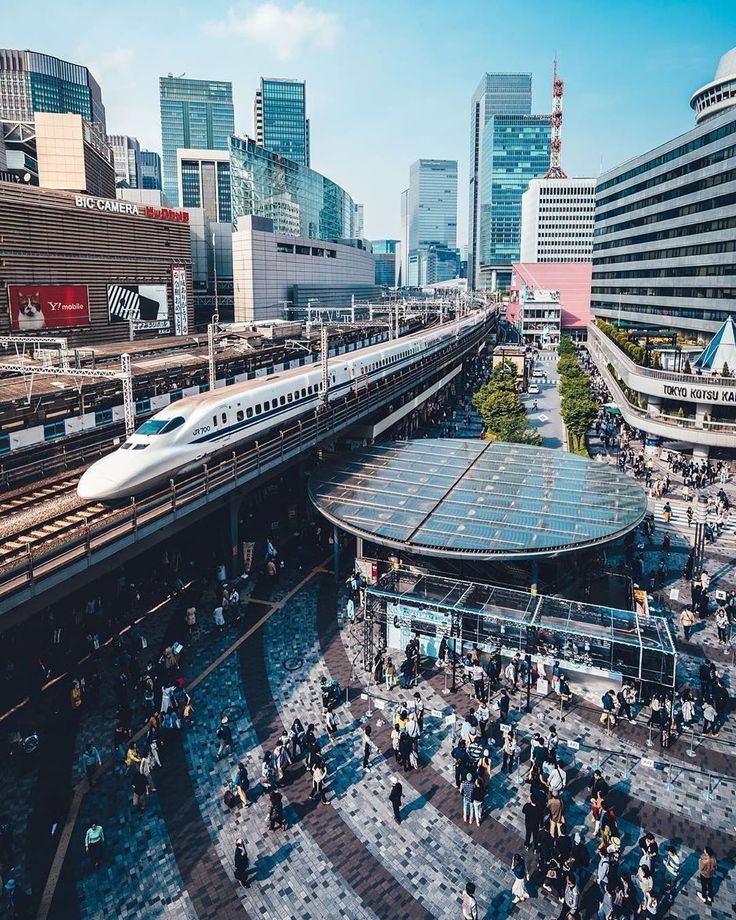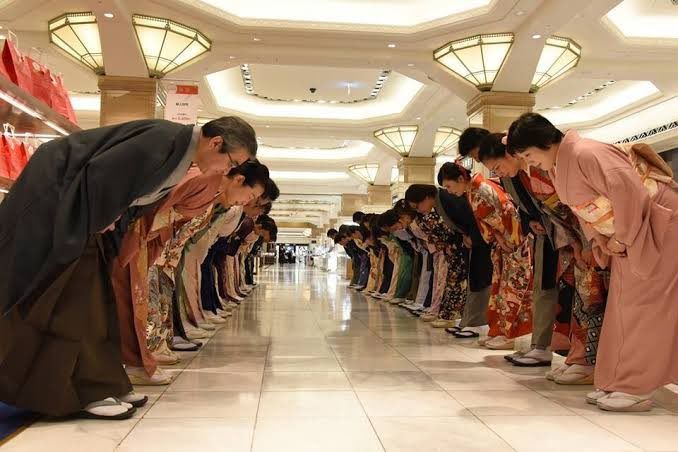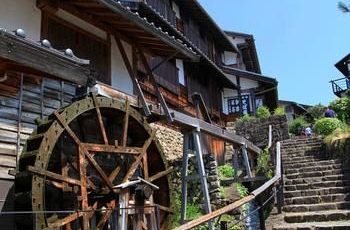Japan is a land of profound paradoxes. It is a nation where ancient, moss-covered shrines stand in the shadow of gleaming skyscrapers; where the silent, deliberate art of a tea ceremony coexists with the frenetic energy of the world’s busiest metropolis; and where a deep reverence for nature and tradition provides the foundation for breathtaking technological innovation. This unique duality has captivated the world for centuries, painting a portrait of a country that is simultaneously looking back with respect and rocketing forward into the future.
Often called “The Land of the Rising Sun,” Japan could just as easily be dubbed “The Land of the Future.” Its contributions to robotics, transportation, and urban living offer a glimpse into the world of tomorrow. Yet, this futuristic vision is not cold or sterile. It is infused with a distinctly Japanese aesthetic—a focus on harmony, efficiency, and a deep-seated code of hospitality known as omotenashi.
This sense of harmony extends to its people. The article’s title mentions “beautiful women,” a sentiment often expressed by visitors. However, the beauty one finds in Japan is far more than skin deep. It is a grace cultivated through tradition, a poise reflected in cultural practices, a vibrant self-expression seen in modern fashion, and a healthy lifestyle rooted in a balanced diet and the pursuit of ikigai—a reason for being. This article will explore 20 amazing facts that illuminate the multifaceted soul of Japan, from its technological marvels to its ancient traditions, and the quiet elegance that permeates its culture.
1. The Shinkansen: Where the Future is Always on Time

Japan’s Shinkansen, or bullet train, is the literal and metaphorical engine of its futuristic image. First launched in 1964 for the Tokyo Olympics, it was a marvel of its time and remains the gold standard for high-speed rail. Reaching speeds of up to 320 km/h (200 mph), these trains connect the country with unparalleled efficiency.
What is truly amazing, however, is not just the speed, but the punctuality. The average delay of a Shinkansen is measured in seconds, not minutes. This isn’t just good service; it’s a reflection of a national obsession with precision and respect for people’s time. The ride is eerily smooth and quiet, allowing passengers to work, relax, or simply watch the Japanese countryside blur into a beautiful panorama. The Shinkansen is more than a train; it’s a promise of a future where technology serves humanity seamlessly and reliably.
2. A Vending Machine for Absolutely Everything
While vending machines exist worldwide, Japan has elevated them to an art form and an essential part of daily life. There is approximately one vending machine for every 23 people, the highest ratio in the world. They are not just for soda and snacks.
In Japan, you can purchase an astonishing array of goods from these automated vendors: hot coffee in a can, steaming bowls of ramen, fresh eggs, umbrellas, business shirts, flower bouquets, and even dashi (a traditional soup stock). This isn’t a novelty; it’s a practical solution for a 24/7 society that values convenience and efficiency. It showcases a future where immediate needs can be met instantly, anytime, anywhere, powered by trust and automation.
3. The Undisputed Kingdom of Robotics
Japan has long been at the forefront of robotics, not just for industrial manufacturing but for companionship and service. Companies like Honda, with its iconic ASIMO robot, have pushed the boundaries of humanoid robotics for decades. Today, robots are an increasingly integrated part of society.
You might be checked into a hotel by a robotic dinosaur, served coffee by a robot arm, or find companion robots like “Pepper” assisting customers in banks and phone stores. In an aging society, Japan is also pioneering care robots to assist the elderly, demonstrating a forward-thinking approach to demographic challenges. This embrace of robotics isn’t about replacing humans, but augmenting and improving daily life, making Japan a living laboratory for the future of human-robot interaction.
4. The Toilets Are More Advanced Than Your Smartphone

A trip to a Japanese bathroom can be a bewildering and delightful technological experience. The modern Japanese toilet, or “washlet,” is a throne of futuristic comfort. Standard features often include a heated seat, a warm water bidet with adjustable pressure and temperature, and a blow dryer.
More advanced models offer automatic lid opening, deodorizing functions, and even a “privacy” button that plays a flushing sound or music to mask any noise. This might seem like an odd obsession, but it speaks to the Japanese dedication to hygiene, comfort, and discreetness. It’s a small but powerful example of how technology is applied to improve even the most mundane aspects of life.
5. An Astonishingly Low Crime Rate
For one of the most densely populated countries in the world, Japan boasts an incredibly low crime rate. It’s common to see children taking the subway alone, people leaving their laptops on a café table to reserve a spot, and lost wallets being returned to their owners with all the cash intact.
This societal safety net is woven from a complex fabric of cultural factors: a strong sense of community, a respect for rules and authority, and the concept of group harmony. The visible presence of local police boxes (kōban) also contributes to a feeling of security. This level of public trust and safety feels almost futuristic to visitors from other countries, offering a model of a highly functional and peaceful civil society.
6. The Art of Hospitality: Omotenashi

Omotenashi is a word that encapsulates the unique Japanese approach to hospitality. It’s often translated as “selfless hospitality,” but it goes much deeper. It is the art of anticipating a guest’s needs before they are even expressed, and providing service without any expectation of a reward (which is why tipping is not practiced and can even be considered rude).
You experience omotenashi everywhere: in the meticulously wrapped purchase at a department store, the hot towel offered before a meal, or the taxi driver who opens the door for you automatically. It’s a philosophy that prioritizes the comfort and experience of the other person, creating an atmosphere of profound care and respect that makes any interaction feel special.
7. The Kingdom of a Thousand Kit Kat Flavors
The humble Kit Kat chocolate bar has achieved legendary status in Japan. This is due to a clever linguistic coincidence—”Kit Kat” sounds very similar to the Japanese phrase “Kitto Katsu,” which means “You will surely win.” This has made it a popular good-luck gift for students before exams.
Nestlé Japan has capitalized on this by releasing over 400 limited-edition and regional flavors. Forget plain chocolate; in Japan, you can find Kit Kats flavored with matcha (green tea), sake, soy sauce, wasabi, sweet potato, and even cherry blossom. This phenomenon is a perfect example of how a global product can be adapted and transformed into a unique cultural icon, showcasing Japanese creativity and marketing genius.
8. Capsule Hotels: A Futuristic Solution to Urban Space
Born from Japan’s need to accommodate business travelers in crowded urban centers, the capsule hotel is a minimalist and futuristic lodging concept. Instead of a room, guests rent a small, bed-sized pod stacked in rows. Each capsule typically contains a bed, lighting, a small television, and power outlets.
While once seen as a last resort, modern capsule hotels are often stylish, clean, and offer excellent amenities like communal lounges, spas, and high-end toiletries. They represent a clever design solution to the problem of space and affordability in megacities, offering a glimpse into how future urban populations might live.
9. Anime and Manga: Shaping Global Culture
Japan’s cultural influence extends far beyond its borders, and nowhere is this more evident than in the global dominance of anime (animation) and manga (comics). From iconic series like Dragon Ball Z and Sailor Moon to cinematic masterpieces from Studio Ghibli, Japanese animation has captured the hearts and imaginations of millions worldwide.
Manga is an equally powerful medium, with sprawling epics and intimate stories that cover every conceivable genre. These art forms are not just for children; they are sophisticated storytelling vehicles that explore complex themes of technology, philosophy, war, and romance. They are a defining cultural export of the 21st century, proving that Japan is not just a technological future-shaper, but a creative one as well.
10. A Nation of Over 6,800 Islands
While we often think of Japan as its four main islands—Honshu, Hokkaido, Kyushu, and Shikoku—the country is actually an archipelago composed of 6,852 islands. This incredible geography has shaped Japan’s history, culture, and cuisine.
Many of these smaller islands have their own unique dialects, traditions, and ecosystems. From the subtropical paradise of Okinawa, known for its stunning beaches and unique Ryukyuan culture, to remote art islands like Naoshima in the Seto Inland Sea, exploring Japan’s islands offers a completely different perspective on the country. This geographic diversity is a constant source of discovery and natural beauty.
11. The Ephemeral Beauty of Cherry Blossoms (Sakura)
Every spring, Japan is transformed into a breathtaking canvas of pink and white as the cherry trees (sakura) burst into bloom. This event is a national obsession, with detailed forecasts tracking the “blossom front” as it moves up the country.
The tradition of hanami (flower viewing) involves gathering with friends and family under the blossoms for picnics and parties. But sakura is more than just a pretty flower; it is a profound cultural symbol. Its fleeting beauty—the blossoms last only for a week or two—is a reminder of the transient nature of life, a core concept in Japanese philosophy known as mono no aware. It’s a moment where the entire nation pauses to appreciate a simple, natural, and beautiful event.
12. Sumo: A Sport of Gods and Giants
Sumo is not just Japan’s national sport; it is a sacred ritual with roots in the ancient Shinto religion. A sumo match is steeped in tradition, from the salt thrown to purify the ring (dohyō) to the powerful, stomping warm-ups designed to drive away evil spirits.
The wrestlers, known as rikishi, live highly disciplined lives in communal stables, adhering to a strict regimen of diet and training to achieve their immense size and strength. Watching a sumo tournament is to witness a living piece of Japanese history. It is a powerful, dramatic, and uniquely Japanese spectacle that connects the modern nation to its mythic past.
13. The Grace and Misunderstood World of the Geisha
The image of the geisha, with her white makeup, elaborate kimono, and graceful demeanor, is one of the most iconic symbols of Japan. However, it is also one of the most misunderstood. A geisha is not a prostitute; she is a highly skilled professional artist.
The word “geisha” translates to “art person.” They are masters of traditional Japanese arts, including dance, music (playing instruments like the shamisen), and the art of conversation. They are hired to entertain guests at exclusive dinners and parties. To train as a geisha takes years of dedication, and they are custodians of a refined and beautiful part of Japanese culture. Their existence represents a commitment to preserving aesthetic traditions in a fast-changing world.
14. The Deeply Ingrained Culture of Bowing
Bowing in Japan is a language in itself. It is far more than a simple greeting; it is a ubiquitous expression of respect, gratitude, apology, and acknowledgement. The depth, duration, and angle of the bow convey different levels of meaning and are determined by the social status and relationship between the individuals.
From a quick nod by a store clerk to a deep, prolonged bow from a company executive, this non-verbal communication is fundamental to social harmony. It is an ever-present reminder of the importance of humility and respect in Japanese society, a physical manifestation of the cultural values that hold the social fabric together.
15. Onsen Culture: Soaking in Nature’s Gift
Thanks to its volcanic geography, Japan is blessed with thousands of natural hot springs, or onsen. Bathing in these mineral-rich waters is a cherished national pastime, central to Japanese culture for centuries.
An onsen experience is about more than just getting clean; it is a form of communal relaxation and spiritual renewal. Whether in a rustic outdoor bath (rotenburo) with a view of a snowy landscape or a refined bathhouse in a traditional inn (ryokan), the ritual of soaking in geothermally heated water is believed to have healing properties for both body and soul. It’s a beautiful intersection of nature, wellness, and community.
16. The Polite, Bowing Deer of Nara
In the city of Nara, Japan’s first permanent capital, the local deer population is unlike any other. Over 1,200 deer roam freely through the city’s main park and Todai-ji Temple, a UNESCO World Heritage site. According to local folklore, these deer are considered sacred messengers of the gods.
What’s truly astonishing is that many of these deer have learned to bow to visitors in exchange for a special cracker (shika senbei) sold in the park. This charming interaction between humans and wildlife has made the deer of Nara a beloved tourist attraction and a symbol of the harmonious relationship between nature and culture in Japan.
17. Home to the World’s Oldest Companies
In a seeming contradiction to its futuristic image, Japan is home to some of the world’s oldest continuously operating businesses. The most famous example is Kongō Gumi, a construction company specializing in Buddhist temples, which was founded in the year 578 and operated for over 1,400 years before being absorbed by another company.
There are thousands of other Japanese businesses that are over a century old. This incredible longevity speaks to a business culture that values stability, quality, and long-term thinking over short-term profits. It’s a testament to the enduring power of tradition and craftsmanship.
18. A Society That Runs on Punctuality
The precision of the Shinkansen is just one example of a society-wide commitment to punctuality. In Japan, being on time is not just a suggestion; it’s a fundamental sign of respect. Trains, buses, and public services run on meticulously planned schedules. If a train is even one minute late, it is a significant event, often accompanied by formal apologies from the operator.
This extends to personal and professional life. Arriving early for an appointment is standard practice. This societal contract ensures that everything runs smoothly and efficiently, reinforcing the idea that everyone’s time is valuable.
19. Ikigai: The Secret to a Long and Purposeful Life
Japan has one of the highest life expectancies in the world, particularly in regions like Okinawa. While diet and healthcare are major factors, many attribute this longevity to a cultural concept known as ikigai.
Ikigai translates roughly to “a reason for being” or “a reason to get up in the morning.” It’s the intersection of what you love, what you are good at, what the world needs, and what you can be paid for. It’s not just about a career, but about having a sense of purpose, community, and joy in daily life. This philosophy contributes to a holistic sense of well-being that promotes both mental and physical health.
20. The Fusion of Timeless Grace and Modern Beauty
The notion of Japanese women’s beauty is a fascinating blend of ancient aesthetics and cutting-edge modernity. The traditional ideal, embodied by the geisha, emphasizes flawless porcelain skin, elegant posture, and the quiet grace of a kimono-clad figure. This aesthetic is rooted in subtlety and refinement.
Today, this heritage coexists with some of the world’s most dynamic fashion and beauty scenes. Tokyo’s Harajuku district is a global epicenter of youth culture, where individuals express themselves through a wild kaleidoscope of styles, from gothic lolita to decora kei. Meanwhile, the J-Beauty industry is renowned for its multi-step skincare routines that focus on hydration, protection, and achieving a healthy, radiant glow (mochi-hada, or “rice-cake skin”).
This beauty is not monolithic. It is the grace of a woman performing a tea ceremony, the fierce creativity of a Harajuku street-style star, the professional polish of a Tokyo businesswoman, and the healthy vitality that comes from a balanced diet and a life guided by ikigai. It is a beauty that is both cultivated and expressed, reflecting the wider Japanese culture—a deep respect for form and tradition, combined with a fearless embrace of the new.
Conclusion: A Land of Harmonious Contrasts
Japan is a country that defies easy categorization. It is a place where you can ride a futuristic maglev train to a 1,000

